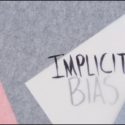 Title: To Tell the Truth Freely: The Life of Ida B. Wells
Title: To Tell the Truth Freely: The Life of Ida B. Wells Author: Mia Bay
Source: Library
Links: Bookshop (affiliate link) |Goodreads
Rating:

Summary: A great blend of scholarly rigor and pop history approachability.
This biography of Ida B Wells started slowly for me, but ended up being a great read. I’d obviously heard of Wells before, but pretty much all I knew was that she was a journalist. It turns out that’s only a tiny glimpse of her impressive accomplishments. In her early teens, the death of Ida’s parents forced her to become a school teacher and take on the responsibility of raising her siblings. The author does a great job of showing how this challenging childhood shaped Ida’s later opinions and life choices. The author also highlights that Ida was impressively self-taught, becoming a famous Black female journalist and co-owner of a newspaper in her thirties in the 1800’s. Ida’s achievement of this level of success with very little formal schooling is incredible. However, we also see that her lack of formal credentials may have combined with sexism, classism, and her uncompromising views on injustice to prevent her from achieving the leadership roles and recognition she deserved in her own life time.
As I’ve already shown a bit in the prior paragraph, this book was memorable for its ability to put Ida’s life in context. I could see how her personal history influenced her life. The author also clearly showed the significance of Ida’s work on lynching. Her efforts were among the first to show that the common justification of lynching as punishment for rape was a complete fabrication. Most victims of lynching weren’t even accused of rape and few of the accusations that were brought had any basis in fact. Ida’s work made lynching an issue women could talk about. Her journalistic approach to the topic was influential, as was the work of others who adopted her methods. Her approach to anti-lynching efforts, legislative challenges to discrimination, and forceful protests also shaped the work of organizations such as the NAACP long after her death.
I really liked that this book made extensive use of primary sources. The quotes made me want to read some Ida’s own writing, although I am glad I read this first to get the broader context. The pictures also made this history feel more immediate and personal. Initially, I didn’t like that each chapter in this book began with a summary of the chapter contents. The author doesn’t tell you to expect this structure, so the first time it happened, I was confused by the repetition of events in the summary and then in the rest of the chapter. Once I understood this organization though, I found it made it easier to follow the story and its significance. I rarely encounter this approach outside of academic literature and think it could have used an introduction here.
It seems possible this book was originally written as an academic work. The text is dense on the page and the book is more than 300 pages. The citations seem very thorough and the structure of the chapters does also point in that direction. Although the dense intro almost put me off, I found that this was written in an engaging enough manner to make a good work of popular history. Despite the dense type, this book flew by once I got into the story. I ended up appreciating the academic touches – great citations, helpful summaries, highlighting of significance and historical context – and felt I got those benefits from a text written to be accessible for any reader.
The post Women in Journalism History appeared first on Doing Dewey.
Go to Source
Author: DoingDewey
